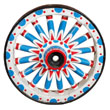Hagenbeck-Wallace Cage # 23
This is one of three wide bodied cage wagons that was built by William “Cap” Curtis for the Corporation shows in Peru, Indiana. This was the only wide bodied three arch cage that used a mesh rather than bars. By wide bodied, we mean the body was wide enough that all four wheels were actually under the body. The first positive proof of this cage’s existence appears in a photo taken by Chalmer Condon on April 25, 1925 in Indianapolis, Indiana on the Sells-Floto Circus. The cage is the first white one from the left.
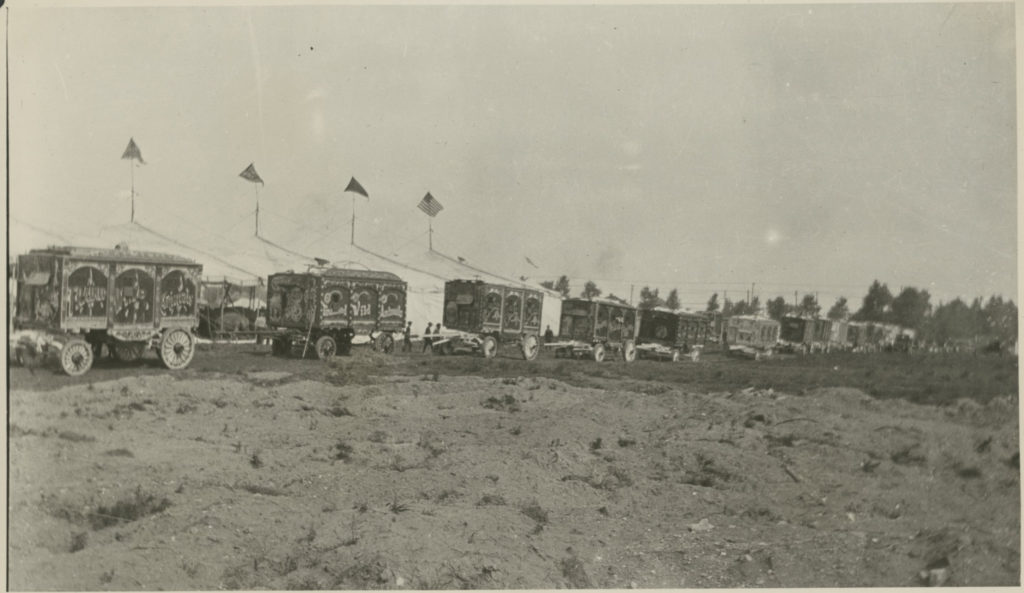 ( 1925 – Joseph Bradbury Album # 9, photo # 77A – April 25, 1925 Sells-Floto in Indianapolis, IN.- Chalmer Condon photo via Pfening Archives )
( 1925 – Joseph Bradbury Album # 9, photo # 77A – April 25, 1925 Sells-Floto in Indianapolis, IN.- Chalmer Condon photo via Pfening Archives )
The cage wagon was used by at least the Sells-Floto Circus and then the Hagenbeck-Wallace Circus. Exactly when it left Sells-Floto and joined the Hagenbeck-Wallace Circus is not confirmed at this time. The cage was designed with a chute door at front and back on the left side of the cage which allowed other cages to be butted up against it to form a performing animals chute to the steel arena. It remained white most of it’s life but it was painted red in 1933 and 1934.
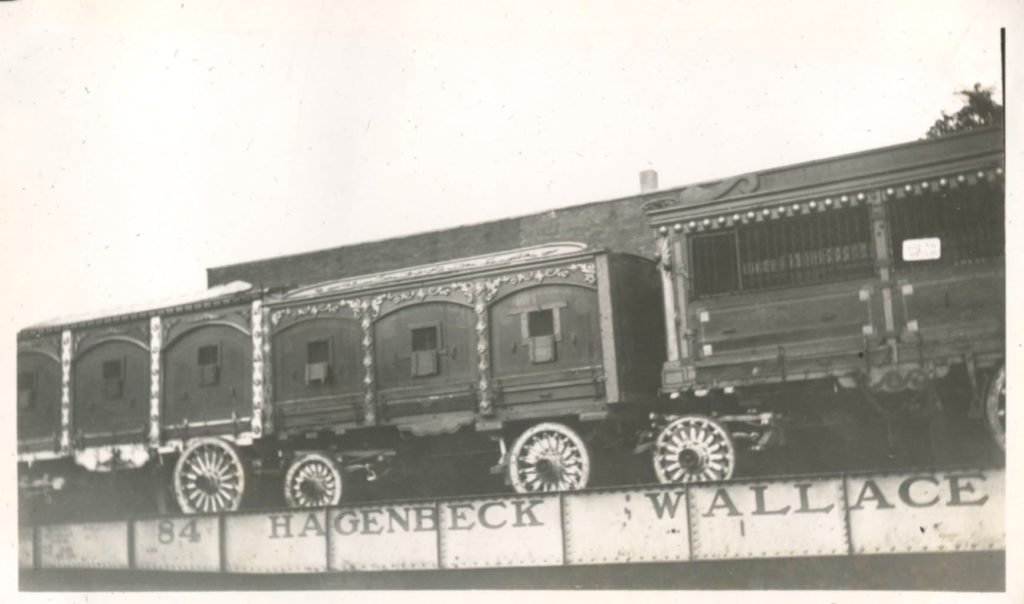 ( 1933 – Joseph Bradbury Album # 9, photo # 70C – Oct. 2, 1933 in Memphis, TN. – Ralph Miller photo )
( 1933 – Joseph Bradbury Album # 9, photo # 70C – Oct. 2, 1933 in Memphis, TN. – Ralph Miller photo )
In 1936, the Hagenbeck-Wallace Circus remained in winter quarters and did not troupe that year. By 1937, it was back to being a white cage again.
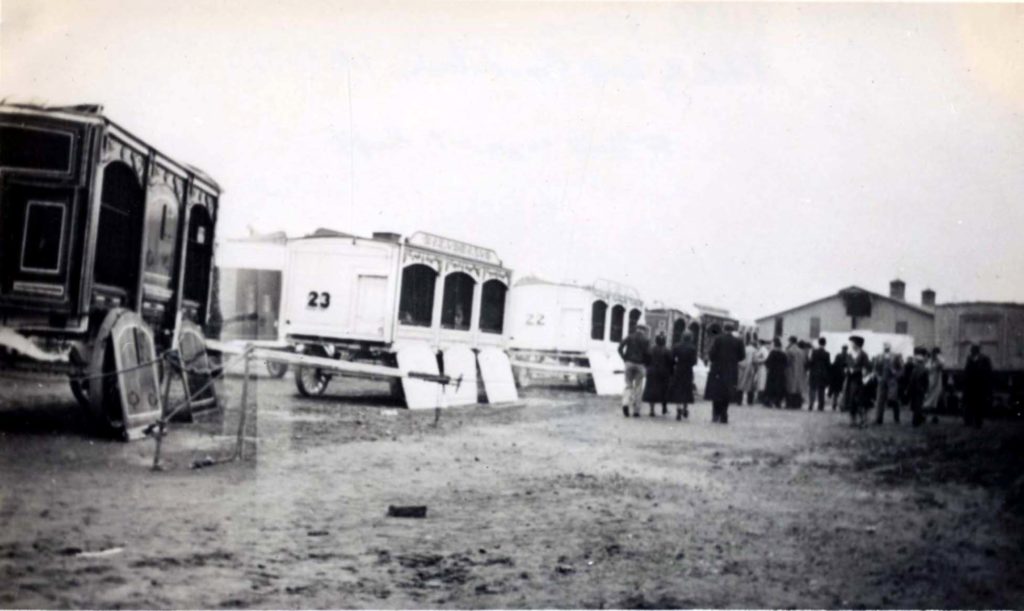 ( 1937 – April 4, 1937 at Peru, IN – Bert Backstein photo )
( 1937 – April 4, 1937 at Peru, IN – Bert Backstein photo )
The cage went out on the 1938 Hagenbeck-Wallace Circus. While operating under a lease agreement to Howard Bary, the show folded out in California. The show was moved to the Al G. Barnes winter quarters which was still touring. It was here that the show was again leased to become the Great American Circus in 1939. That show was very short lived and it all returned to the now vacant Al G. Barnes winter quarters. Louis Goebel made an offer to buy the wagons for his movie prop business. He then leased much of it out in 1945 for the Arthur bros. Circus. This cage became # 85 on the Arthur Bros. Circus.
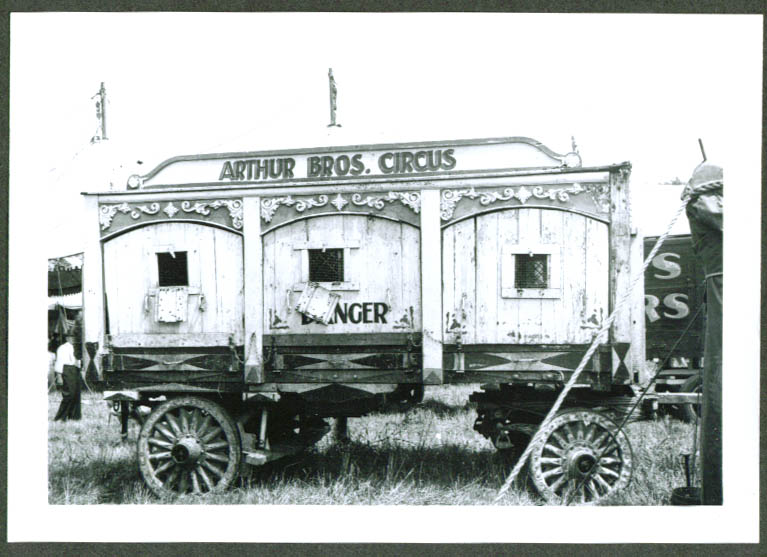 ( Cage # 85 in 1945 on Arthur Bros. Circus – Don Smith photo )
( Cage # 85 in 1945 on Arthur Bros. Circus – Don Smith photo )
As you can see from the 1945 photo, carvings were coming off and the wagon was deteriorating. Once the Arthur Bros. Circus closed, the cage came back to Thousand Oaks, CA. where it remained at the Louis Goebel property. He sold this cage to Marshall Long of Apache Junction, AZ. in 1946. Mr. Long did some repairs to it and used it in some local parades.
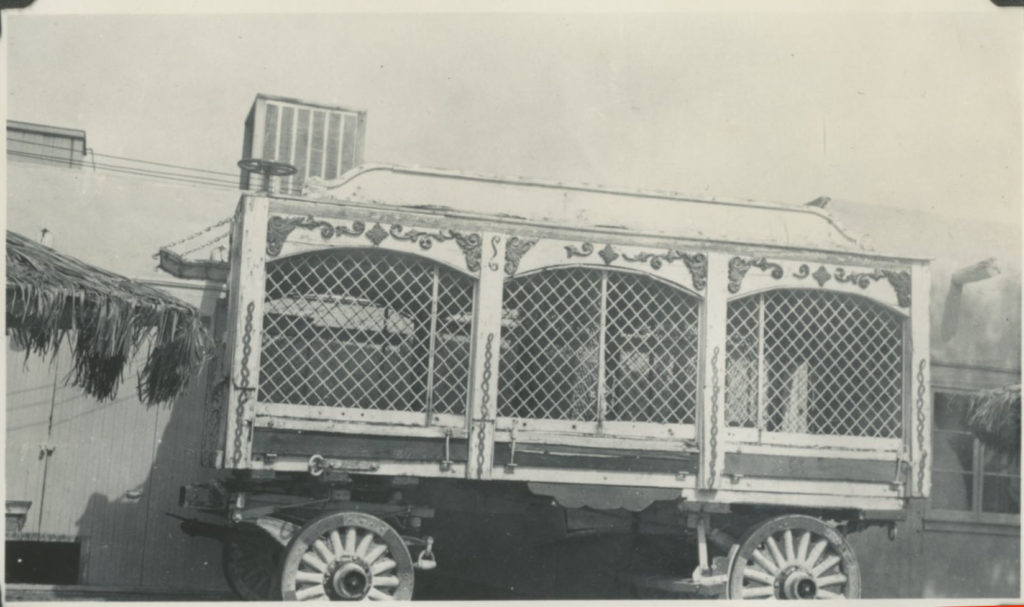 ( 1954 – Joseph Bradbury Album # 15, photo # 47D – Steel plate on cage says This property is leased of Hagenbeck-Wallace Shows Co. Peru, In. It was sitting at a road house in Apache Junction, Arizona )
( 1954 – Joseph Bradbury Album # 15, photo # 47D – Steel plate on cage says This property is leased of Hagenbeck-Wallace Shows Co. Peru, In. It was sitting at a road house in Apache Junction, Arizona )
In 1956, he sold it to Robert Winne of Buckeye, AZ. Mr. Winne maintained it and held on to it through 1976. In the summer of 1976, he sold the cage to Fred Pfening, Jr. and Paul Ingrassia. They had it brought to Baraboo, Wisconsin where it arrived at the Circus World Museum on October 2, 1976.
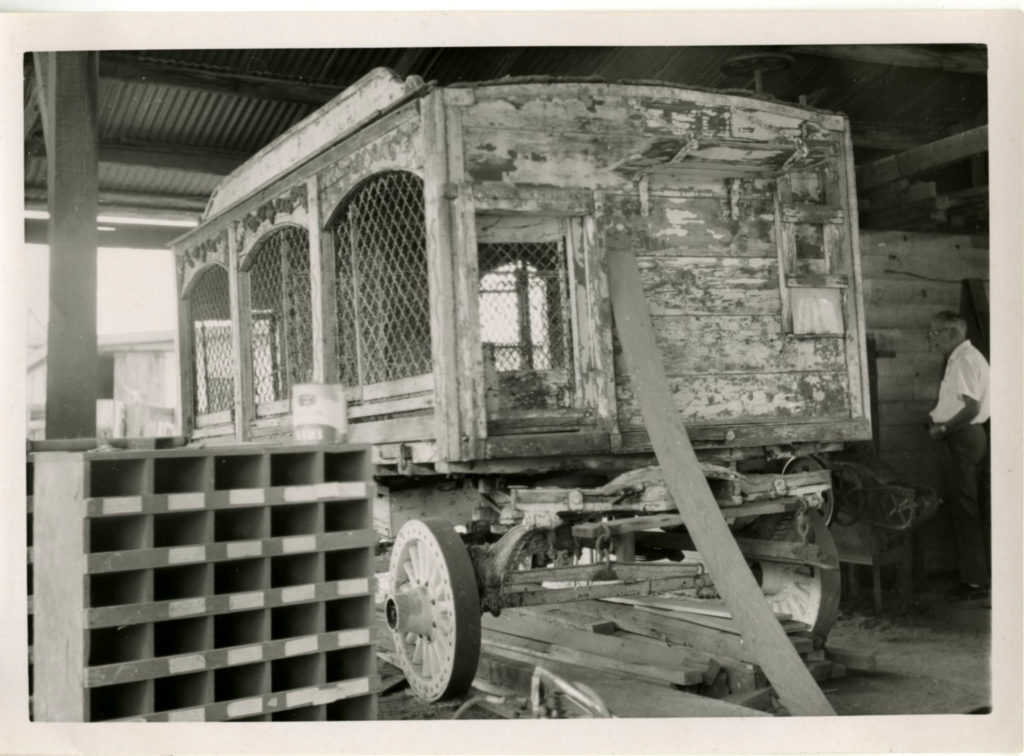
( 1976 at the Circus World Museum – Conover photographic collection )
It was placed on indefinite loan to the Museum. In 1980, they donated this cage to the Circus World Museum. Having been used in various circus parades over the years, this cage was one of several wagons that were used in the mover “Water For Elephants.”
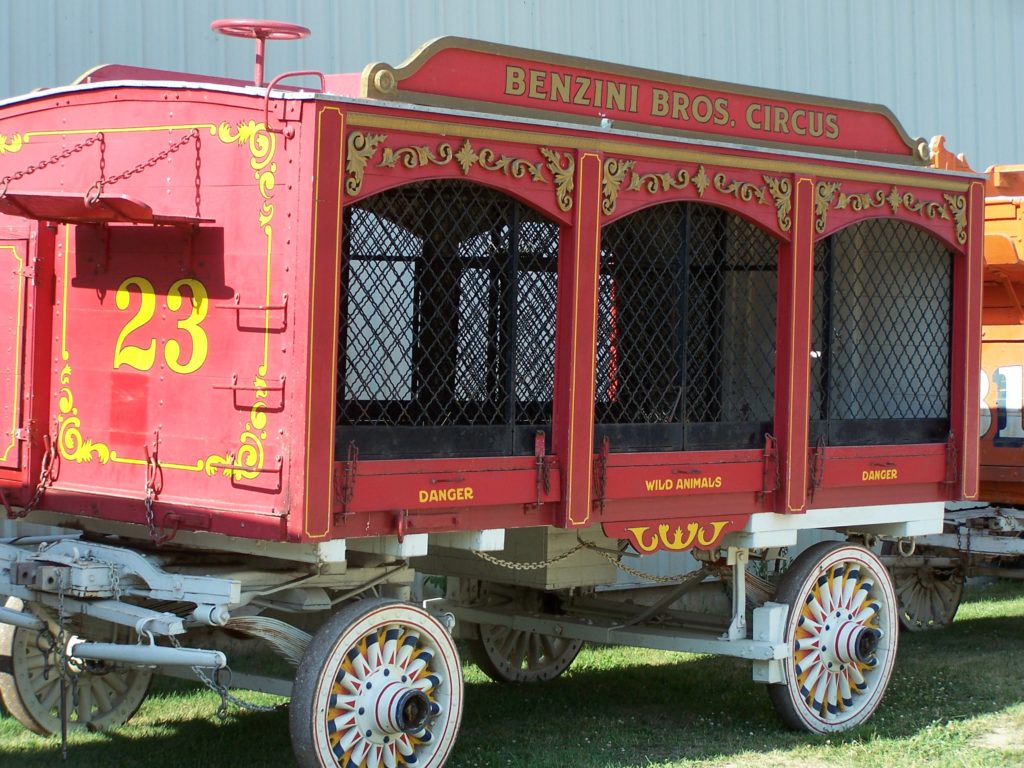 ( 2012 – as painted for the movie “Water for Elephants” – Bob Cline photo )
( 2012 – as painted for the movie “Water for Elephants” – Bob Cline photo )
The wagon can be seen in person at Circus World in Baraboo, Wisconsin
If you have any questions or have more photographic evidence, feel free to contact us at circuswagons@gmail.com
